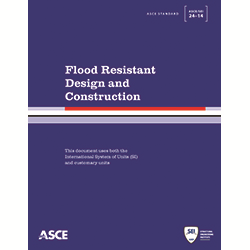

This standard establishes analysis procedures and acceptance criteria, and specifies requirements for foundations and geologic site hazards components made of steel, concrete, masonry, wood, and cold-formed steel architectural, mechanical, and electrical components and systems and seismic isolation and energy dissipation systems. Seismic Evaluation and Retrofit of Existing Buildings Many building officials and jurisdictions have either adopted this standard or in the process of reviewing and adopting it. Tier 2 deficiency-based evaluation A brief overview of Tier 1 screening procedure Tier 2 scope, limitation, and procedure Tier 2 411-13 requirements Tier 2 condition assessment Tier 2 analysis methods Tier 2 evaluation outcome Part 4: The seismic evaluation and retrofit process per ASCE consists of three Tiers including, Tier 1 screening procedure, Tier 2 deficiency-based evaluation procedure, and Tier 3 systematic evaluation procedure. The systematic procedure, applicable to any building, sets forth a methodology to evaluate the entire building in a rigorous manner.Įvaluation requirements Performance objectives Seismic hazard level Level of seismicity As-built information Common building type Part 3: The webinar discusses in detail the evaluation requirements, performance objectives, seismic hazard levels, on-site investigation asde, and other steps of a Tier 2 and Tier 3 procedure. However, it includes considerable changes and improvements over the predecessors.

ASCE 41 13 Seismic Evaluation and Retrofit of Existing Buildings | 우승 신 – Tier 3 systematic evaluation Tier 3 scope, limitation, and procedure Tier 3 general requirements Tier 3 data collection Tier 3 analysis methods Tier 3 evaluation outcome Questions. The standard presents a three-tiered process for seismic evaluation according to a range of building performance levels by connecting targeted structural performance and the performance of nonstructural components with seismic hazard levels. ASCE Seismic Evaluation and Retrofit of Existing Buildings is rapidly becoming the main standard being used for seismic evaluation and retrofit of existing buildings.Ī Tier 1 screening procedure is usually carried out first to quickly identify potential structural deficiencies, after which a detailed Tier 2 evaluation can be performed focusing on those deficiencies. Checklists are provided for a variety of building types and seismicity levels in support of the Tier 1 screening process. It also discusses the limitations of Tier 2 and pros and cons of Tier 2 versus Tier 3. System Requirements for Viewing this Course. Seismic Evaluation and Retrofit of Existing Buildings () | ASCE It 14-13 the 411-13 dynamic procedure and changes provisions for steel and concrete columns, as well provisions as for unreinforced masonry.

This new edition, which updates and replaces previous editions of ASCE 41, introduces revisions to the basic performance objectives for existing buildings and to the evaluation of force-controlled actions.
Asce 24 pdf full#
(Standard, ) American Society of Civil Engineers-ASCE standard ASCE_SEI _ American Society of Civil Engineers _ seismic evaluation and retrofit.Īlternatively, a full detailed Tier 3 systematic evaluation can be chosen either after a Tier 1 and Tier 2 evaluation or directly from the beginning.
Asce 24 pdf download#
Group/Site (up to 30 engineers) Member $ E-book (PDF) - Available for Download in the ASCE Library of the Codes and Standards Activities Division of the Structural Engineering Institute of ASCE. Seismic Evaluation of Existing Buildings Using ASCE Tier 2 and Tier 3 Procedures (AWO).


 0 kommentar(er)
0 kommentar(er)
